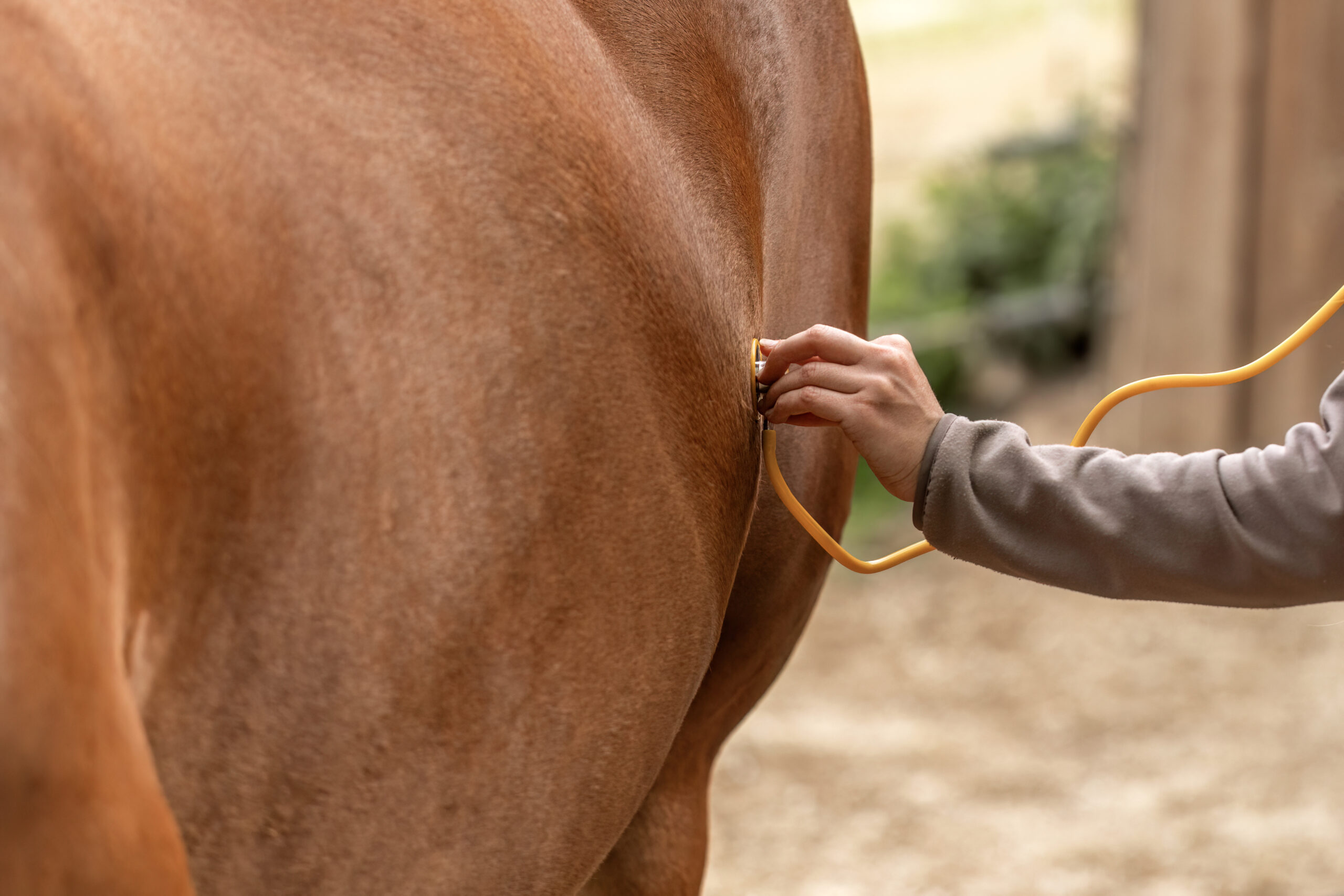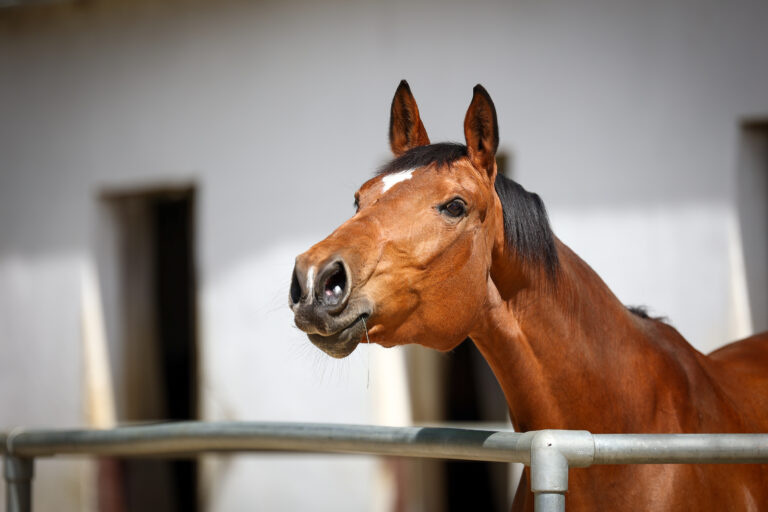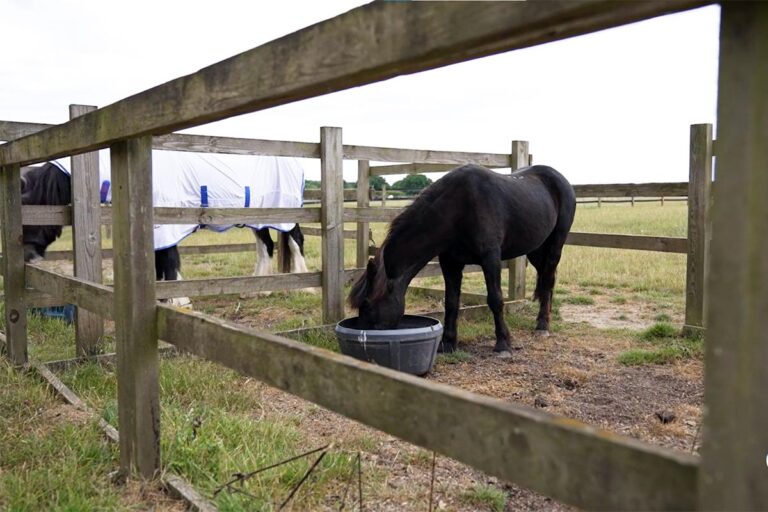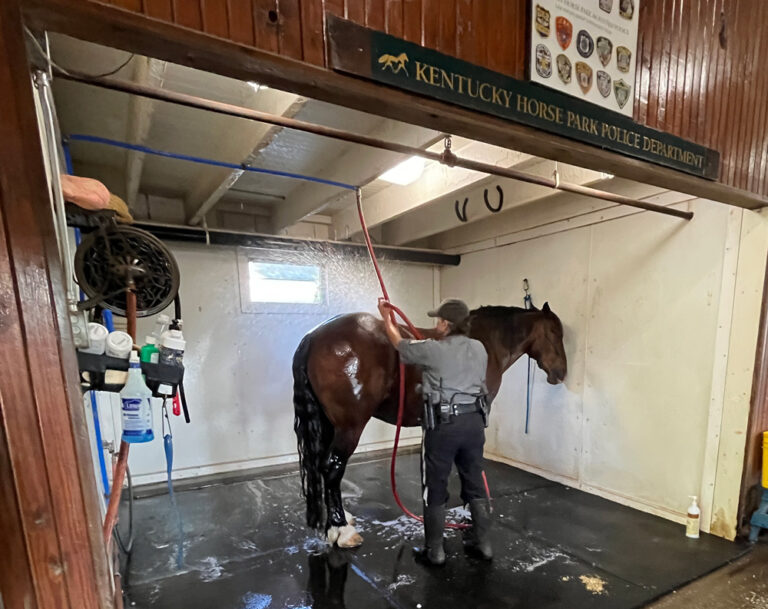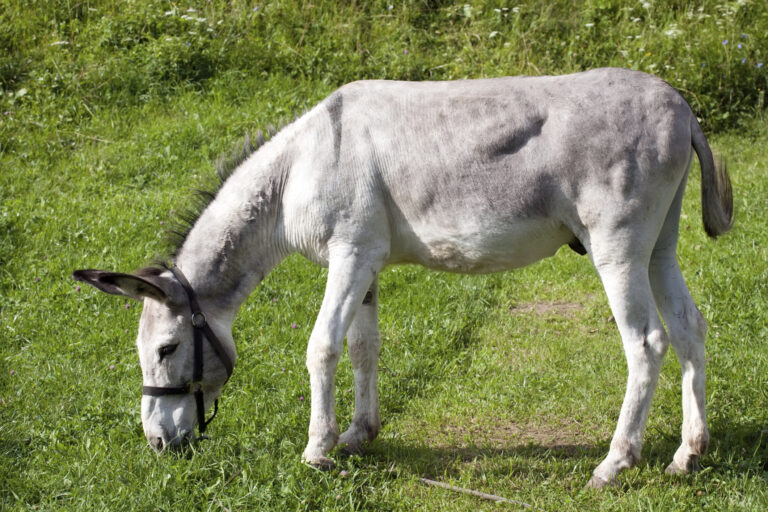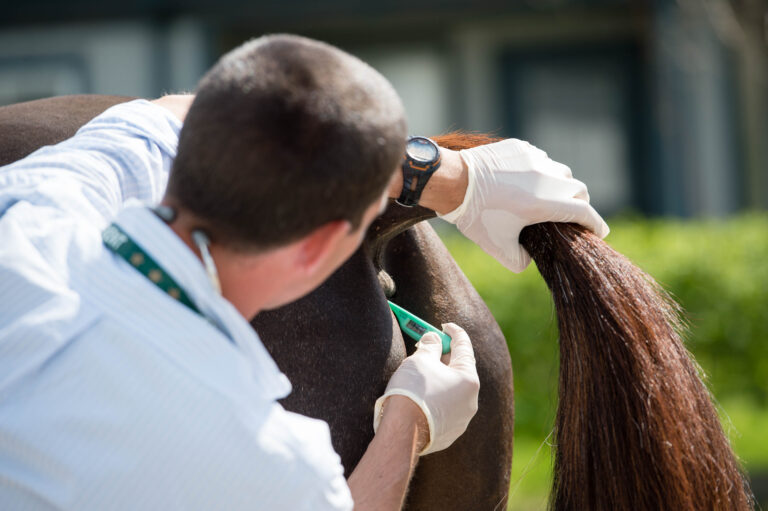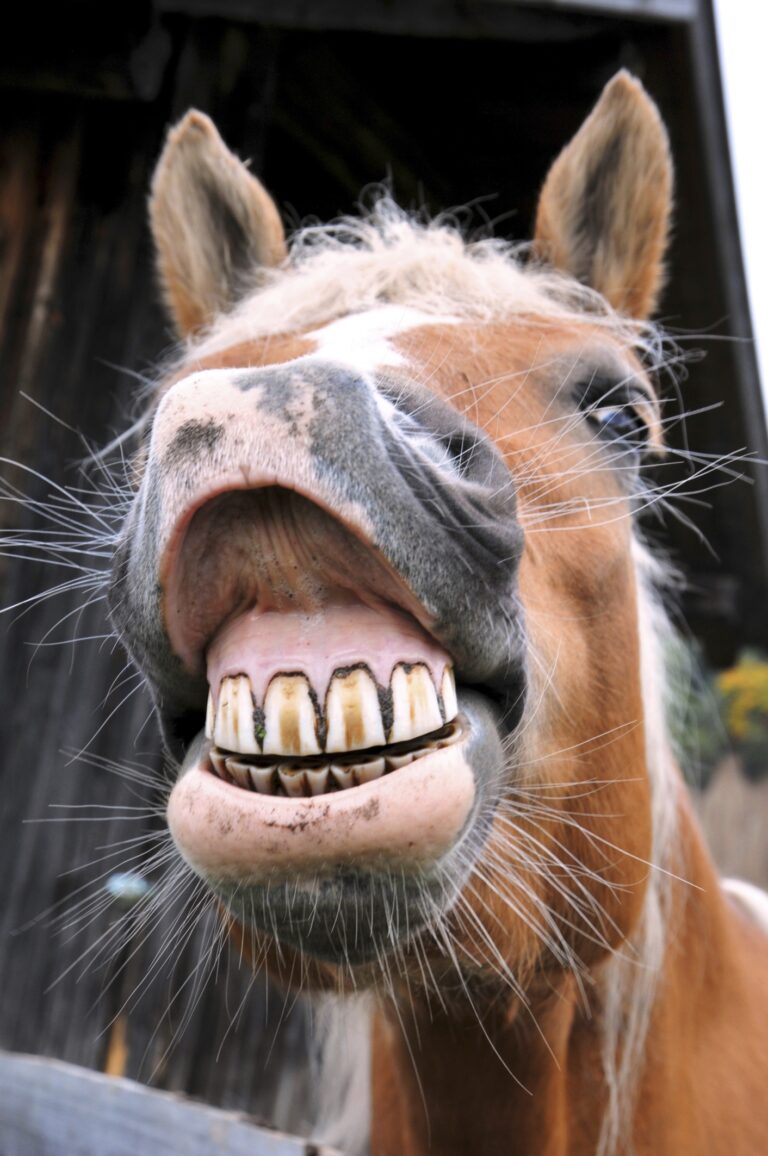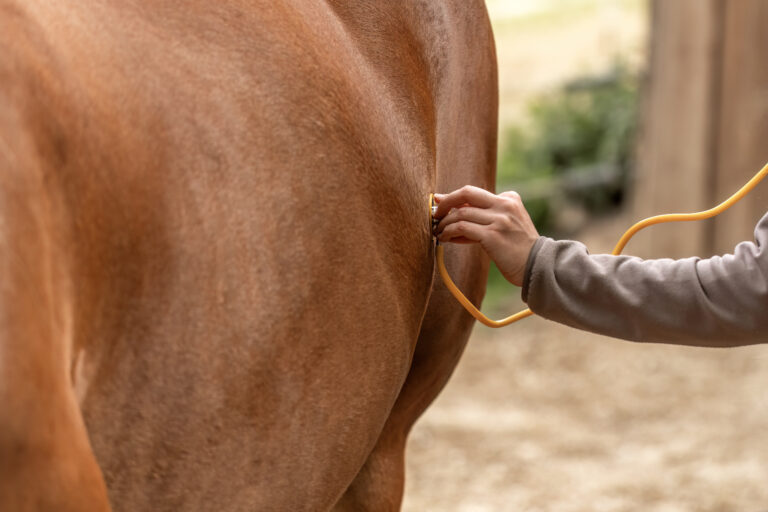In this video, Dr. Christine Johnson shows us how to listen to and interpret gut sounds in horses. This is important because those noises are a key to understanding colic or gastrointestinal discomfort.
(Editor’s note: The content of this video is the expert’s approach to the topic. Please consult with your practitioner if you have questions.)
Click on the above video player to watch the video.
Listening for Gut Sounds in Horses
Listening to your horse’s gut sounds is part of a normal physical exam, said Johnson. The best way is to use a stethoscope. Start with the stethoscope on the horse’s upper flank area. Listen for any sort of noise. You will move your stethoscope down the horse’s flank to listen to different areas of the GI tract on both sides of the horse.
Normal horses should have some gut sounds if they have been eating. No noises can be indicative of problems.
Conversely, an increase in gut noises can be a sign of hypermotility (i.e., GI tract content moving too quickly through the gut).
“There should be approximately 1-3 gut sounds per minute,” said Johnson. “That indicates good gut health.”
Listening for gut sounds in times of colic can help you and your veterinarian determine the cause and severity of that colic.
Further Content
- Video Library at MySeniorHorse.com
- Checking Equine Feces for Sand Video. MySeniorHorse.com
- Forage and Grain Tips to Reduce Equine Colic Risk. Dr. Pat Harris. MySeniorHorse.com
- 7 Management Tips to Reduce the Risk of Feed-Associated Equine Colic. Dr. Pat Harris. MySeniorHorse.com
Sign up for My Senior Horse’s FREE newsletter to get the latest information about equids 15 years and older delivered straight to your inbox!
-
View all posts
Editors of My Senior Horse are journalism professionals, most of whom are lifelong horse owners.

